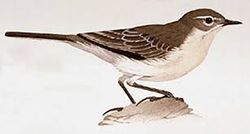Difference between revisions of "ISSS608 2017-18 T3 Assign Li Hongxin Methodology"
| Line 90: | Line 90: | ||
==Audio Visualization and Classification== | ==Audio Visualization and Classification== | ||
| + | <div style="margin:0px; padding: 2px; background:#B0E0E6; font-family: Arial; border-radius: 1px; text-align:left"> | ||
| + | {| class="wikitable" style="background-color:#FFFFFF;" width="100%" | ||
| + | |- | ||
| + | | | ||
| + | <b>Approach</b> | ||
| + | || | ||
| + | <b>Description</b> | ||
| + | |- | ||
| + | | | ||
| + | <b>Audio Visualization</b> | ||
| + | || | ||
| + | <u> i. Waveplot</u> | ||
| + | * | ||
| + | <u> ii. Specgram</u> | ||
| + | * | ||
| + | |- | ||
| + | | | ||
| + | <b>Audio Classification</b> | ||
| + | || | ||
| + | <u> i. Feature Extraction</u> | ||
| + | * | ||
| + | <u> ii. Classification Methods</u> | ||
| + | * Logistic Regression | ||
| + | * SVM | ||
| + | * Random Forest | ||
| + | |} | ||
| + | </div> | ||
Revision as of 10:47, 7 July 2018
|
|
|
|
|
Contents
Tools
a. R: used for data cleaning.
Packages: tidyverse
b. Tableau: used for Map & Pattern visualization.
c. Python: used for density visualization, audio visualization and audio classification.
Packages: os, glob, pandas, numpy, matplotlib, seaborn, librosa, sklearn
Process for Data Preparation
The following are 5 key steps for data cleaning, and data manipulation for further visualization and analysis.
Step 1: Deal with Missing Values. Replace all symbols such as "?", "??:??" in Time, and "No score" in Quality which
stand for missing values, into NA.
Step 2: Fix Data Quality Issues. Transform all letters into uppercase for convenience, and remove extra spaces and "?".
Step 3: Unify the Date & Time Format. Transform all Date into "%Y-%m-%d" format. If the raw data doesn't contain month
or day info, we impute the data as "-01-"(January) and "-01"(the first day). Transform all Time into "HH:mm" format and use
standardized all times into 24 hour formatting. If raw data doesn't contain minute info, set it as "00". If raw data contain
letters such as "morning", or "dawning", imputed them into "08:00" or "18:00".
Step 4: Modify Data Types. Change X and Y coordinate from character into int.
Step 5: Create Season and Timeslot variables based on Date and Time. For example, set March to May as Spring ,and set 06:00
to 12:00 as "Morning".
Pattern Visualization and Analysis
|
Approach |
Description |
|
Geo-spatial Visualization
|
i. Scatter Plot on Map
ii. Kernel Density Plot
|
|
Trend Visualization
|
Area/Line Graph
|
|
Interactive Dashboard
|
Combine the result of Geo-spatial visualization and trend visualization
|
Audio Visualization and Classification
|
Approach |
Description |
|
Audio Visualization |
i. Waveplot ii. Specgram |
|
Audio Classification |
i. Feature Extraction ii. Classification Methods
|
